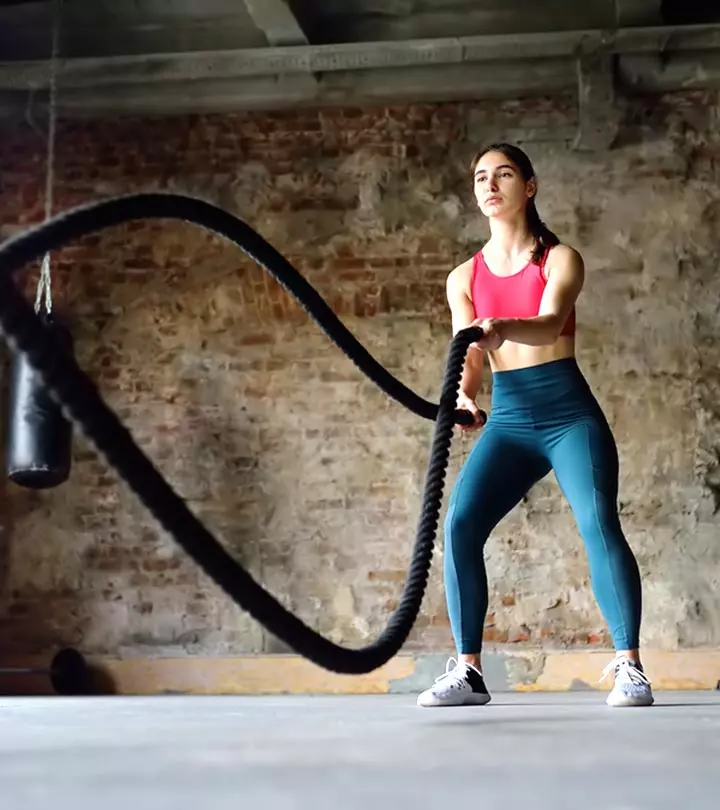
减脂的 HIIT 锻炼:用更少的时间燃烧更多的脂肪
Introduction — Why HIIT Is Redefining the Rules of Fat Loss
If you’ve ever felt like you’re spending hours at the gym with minimal fat loss results, you’re not alone. Traditional steady-state cardio has long dominated fitness regimens, but a new approach is redefining fat-burning efficiency. Welcome to High-Intensity Interval Training (HIIT) — a science-backed, time-efficient workout method designed to maximize fat loss while minimizing workout time.
But how does HIIT actually get you to burn more fat in a shorter amount of time? Is it possible to do it long term? Is it for everyone?
This article delves into the metabolic mechanisms, hormonal stimuli, and body adaptations that make HIIT one of the most powerful tools in contemporary weight loss research.
What Is HIIT?
Definition and Core Principle
High-Intensity Interval Training (HIIT) is an exercise technique that involves switching between periods of high-intensity exercise and low-intensity restoration. The goal is to get your heart rate up to 80–95% of your maximum during the high-intensity portion and recover partially during low-intensity periods.
One classic example:

- 30 seconds running
- 90 seconds walking
- Repeat for 15–20 minutes
Why It Works
In contrast to moderate-intensity cardio, which primarily expends calories while exercising, HIIT accesses a system called excess post-exercise oxygen consumption (EPOC) — or the “afterburn effect.” The effect enables the body to burn calories for several hours after exercise is over, resulting in HIIT being greatly effective for fat loss.
How HIIT Affects Fat Loss
Increases Metabolic Rate
HIIT increases your resting metabolic rate for 24–48 hours after exercise. That is, your body turns into a calorie-burning machine even while resting.
Increases Insulin Sensitivity
Several studies demonstrate that HIIT has a remarkable effect on improving insulin sensitivity, particularly in obese and pre-diabetic people. This results in improved glucose metabolism and fat storage reduction, particularly within the abdominal area.
Encourages Visceral Fat Loss
Studies published in Obesity Reviews revealed HIIT to be especially effective at decreasing visceral fat — the abdominal fat stored deep within the body, associated with cardiovascular disease and type 2 diabetes.
Advantages of HIIT Workouts
- Time efficiency – Burn the same number of calories in 15–30 minutes as in a 60-minute jog
- Fat oxidation – Greater dependence on fat as a fuel source after exercise
- Retains muscle mass – Unlike low-intensity cardio, HIIT preserves lean muscle
- No equipment required – Can be completed using bodyweight alone
- Cardiometabolic health – Reduces blood pressure, improves cholesterol, and increases VO₂ max
Sample HIIT Protocols for Fat Loss
Beginner Level
Workout Duration: 15 minutes
- 30 seconds jumping jacks
- 30 seconds rest
- 30 seconds high knees
- 30 seconds rest
- 30 seconds bodyweight squats
- Repeat for 3–4 rounds
Intermediate Level
Workout Duration: 20 minutes
- 40 seconds mountain climbers
- 20 seconds rest
- 40 seconds jump squats
- 20 seconds rest
- 40 seconds burpees
- 20 seconds rest
- Repeat for 3–4 rounds
Advanced Level (Tabata Style)
Workout Time: 4–8 minutes
- 20 seconds sprint
- 10 seconds rest
- Repeat for 8 rounds
Tip: Always get a physician’s clearance prior to initiating high-intensity exercise, particularly if you have cardiovascular risk factors.
What Science Says , Real-World Studies
A 2011 study in the Journal of Obesity found that 12 weeks of HIIT decreased subcutaneous fat and improved cardiorespiratory fitness in women by more than 13 percent.
Another trial appearing in Metabolism: Clinical and Experimental reported that HIIT was superior to traditional cardio for minimizing belly fat in obese men.
These results strengthen that HIIT is not a fleeting trend. It’s a clinically validated fat-loss method supported by decades of metabolic research.
Most Asked Questions (PAA)
What is the greatest HIIT exercise to burn fat?
Sprinting, jump squats, burpees, and mountain climbers are some of the best HIIT exercises to burn fat.
How many times can I do HIIT each week?
Most suggest 2–4 times a week to prevent overtraining and allow for correct recovery.
Is HIIT superior to conventional cardio for fat loss?
Yes, in most instances HIIT leads to greater loss of fat per minute worked, particularly in the midsection.
Is HIIT suitable for beginners?
Certainly. Beginners can begin with low-impact exercises and longer rests and gradually build intensity.
Are there side effects to HIIT?
Overtraining, joint stress, or cardiovascular danger can result if done recklessly or without respect. Always begin gradually and adhere to structured formats.
Who Should Avoid HIIT?
HIIT is not for everybody. People with the following conditions must see a healthcare provider before starting:
Heart disease or uncontrolled high blood pressure
Joint injuries or severe arthritis
Recovery from surgery
Pregnancy (except for preapproved specific prenatal HIIT programs)
Final Thoughts Is HIIT Worth the Hype?
If your aim is to burn as much fat in the least amount of time, HIIT isn’t just efficient but life-changing. It creates strength, burns fat, and improves overall fitness in a time-saving way. But as with any fitness program, consistency, rest, and technique are key to long-term results.
You don’t require specialized equipment or sessions at the gym. Only 20 intentional minutes, a mat, and an inclination to challenge yourself.



